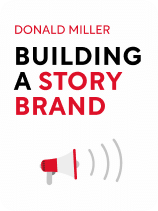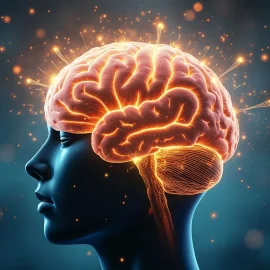

This article is an excerpt from the Shortform book guide to "Building a Storybrand" by Donald Miller. Shortform has the world's best summaries and analyses of books you should be reading.
Like this article? Sign up for a free trial here .
What are marketing motivations? What are the main motivations for people making purchases?
There are two main types of marketing motivations: positive and negative. Motivations are either based in loss aversion and fear, or in finding satisfaction.
Read more about the types of marketing motivations and how they work.
Marketing Motivations
There are positive and negative marketing motivations. Negative motivations are things like fear and loss aversion. Positive motivations depend on the customer finding fulfillment with your brand. Both work as marketing motivations, but one has better results as a storybrand.
Negative Stakes
There are only two motivations in life: 1) get something good or 2) avoid something bad, and the last two elements of the SB7 Framework address these motivations, since they works as marketing motivations as well.
The sixth of the seven story elements is the negative stakes—what happens if the character fails to act, fails to solve the problem, and fails to get what she wants? In narrative, the possibility of loss—and the terrible consequences loss comes with—creates suspense and motivates the audience to stay engaged with the story. (Shortform example: In Harry Potter, if hero Harry doesn’t defeat villain Voldemort, Voldemort will take over the wizarding world and torture or murder people.)
In branding, the possibility of loss—the bad things that will happen to your customer if she doesn’t buy your product—motivates your customer to continue looking for a solution to the problem and a happy ending to her story. (Shortform example: if you sell hand soap and your customer doesn’t buy it, her hands will be filthy and could infect her with diseases.)
Stakes are important because every moviegoer and customer, when confronted with a story, is always subconsciously asking, “Why should I care?” and “Where can this take me?” If there’s nothing at stake, the story is boring, and people tune out.
First, we’ll discuss the power of negative stakes. Then, we’ll discuss how to employ them, and how to add them to your brandscript.
Loss Aversion
Interestingly, people aren’t proportionally affected by gains and losses—people dislike losing more than they like winning. For example, a person will be happy if they win $200, but much more unhappy if they lose $200. As a result, negative stakes are a stronger motivator than positive ones, and in some cases, people are two or three times more driven by loss than gain.
For example, for a long time, George Wallace, the governor of Alabama, resisted the 1964 Civil Rights Act. Lyndon Baines Johnson was able to convince him to stop opposing it by laying out the negative stakes of doing so: If Wallace kept up resistance, he’d go down in history as hateful.
(To learn more about loss aversion, read our summary of Daniel Kahneman’s Thinking, Fast and Slow.)
Use Fear Sparingly
Fear is an effective motivator and can create a sense of urgency, but its application requires a delicate hand. When people aren’t scared enough, they don’t act. Most brands tend too hard in this direction by not bringing up any negative stakes at all. This makes the story boring and people tune out.
On the other hand, when people are too afraid, they also don’t act—they just ignore everything because it’s overwhelming. Additionally, fearmongering annoys customers, and brands that do it don’t usually succeed.
Positive Stakes
The last of the seven story elements is positive stakes—what happens if the character successfully acts, solves the problem, and gets what she wants? In narrative, the possibility of gain—and the happy ending it comes with—motivates the audience to stay invested in the story. (Shortform example: In Harry Potter, if hero Harry does defeat villain Voldemort, the wizarding world will be safe, and Harry can have a normal life and start a family, something he’s wanted since Voldemort killed his parents.)
In branding, the possibility of gain—and the positive stakes it comes with—motivates the customer to buy your product. (Shortform example: if you sell hand soap, and people buy it and use it, they’ll be clean and healthy.) These are positive marketing motivations.
The goal of this element is to close the gap between the hero/customer and what she wants. First, we’ll discuss the requirements of happy endings and three popular story endings that we can draw inspiration from. Then, we’ll discuss how to share the happy endings with customers, and how to add them to your brandscript.
The Happy Ending Must Be Specific
The most successful brands show customers exactly how a product will change their lives for the better. Many brands are too vague, and it’s hard to get excited about vagueness. (Shortform example: If you sell gym equipment, promising a “you’ll be happy with your purchase” isn’t as compelling as “you will be as strong as an Olympian.”)
To come up with a specific positive outcome, consider how your product or service will solve all three types of problems from Chapter 3: external (what their life will look like), internal (how they will feel once the problem is solved), and philosophical (why the world is a better place now that the problem is solved).

———End of Preview———
Like what you just read? Read the rest of the world's best book summary and analysis of Donald Miller's "Building a Storybrand" at Shortform .
Here's what you'll find in our full Building a Storybrand summary :
- How storytelling enhances brand marketing
- Why you should make the consumer the hero of your brand's story
- The 7 elements that make marketing work






